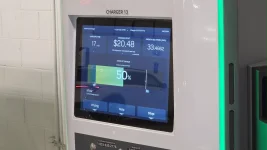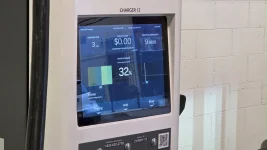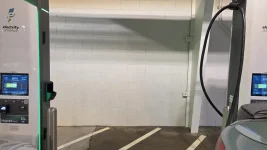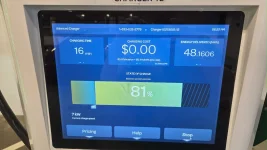I was able to capture this behavior at EA during my most recent charge session. I couldn't get a pair of chargers to myself so I picked the spot next to a Ford Mustang Mach E that I saw was going at just under 100 kW. It had already been charging for 17 minutes at was at 50%:
View attachment 62699
I plugged in at 18% and within 3 minutes I was already ramping up above 200 kW:
View attachment 62700
It was hard to get a wide enough shot but you can zoom in and see here at this moment the Ford was going at 89 kW and I was going at 234 kW after 7 minutes (so the total power being dispensed between the 2 units was 323 kW, pretty close to the quoted 350 kW):
View attachment 62701
I overtook the Ford 9 minutes into the charging session when we were both at 62% SOC - the Ford had been going for 24 minutes at that point vs 9 minutes for me. I decided to end the session at 81% when the power dropped to single digits for cell rebalancing. Total charge time was 16 minutes.
View attachment 62702
So again, the PSA is if you can't get a pair of balanced chargers to yourself, pick something slow charging to park next to, ideally a Bolt or Niro/Kona so you can get full charging power (assuming ambient temp is warm enough or you're preconditioned).










